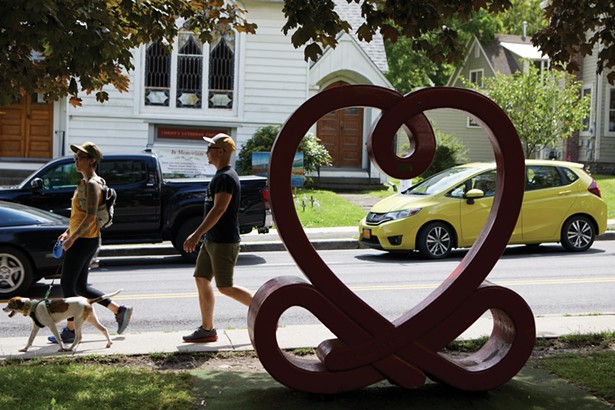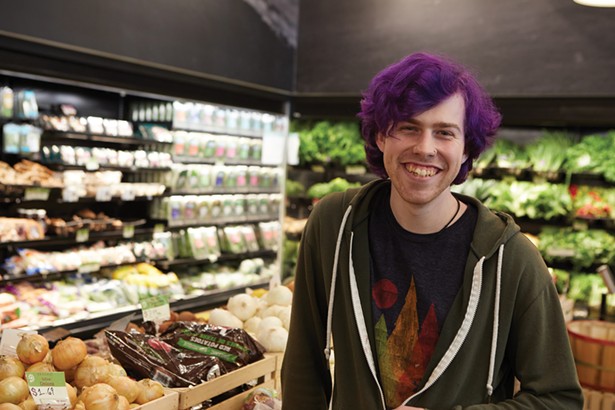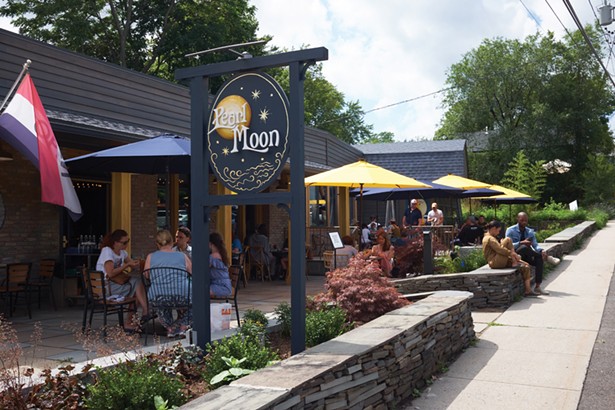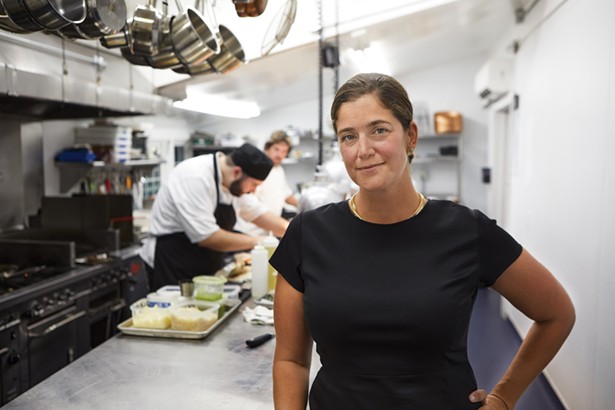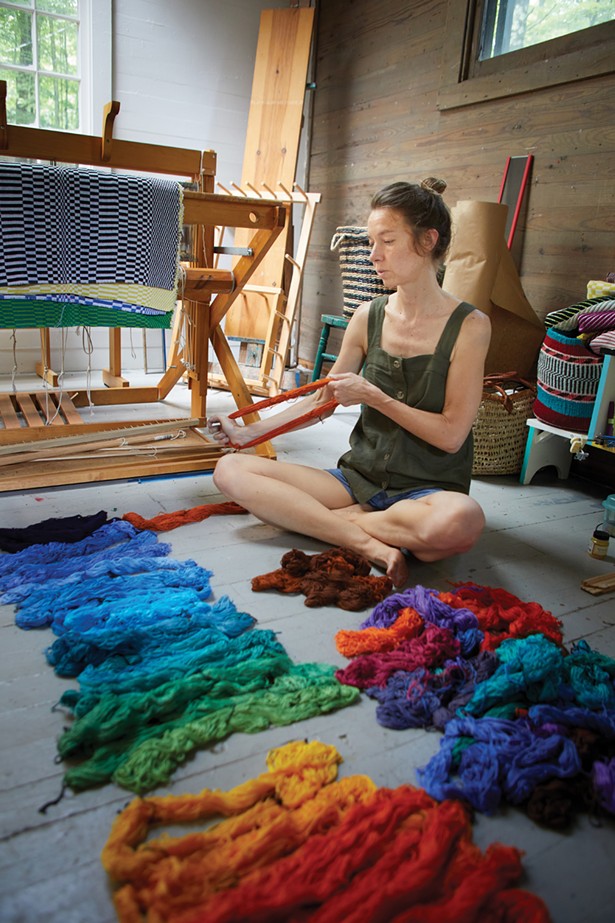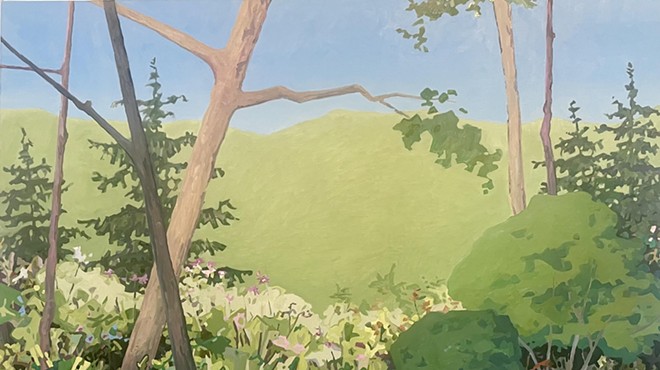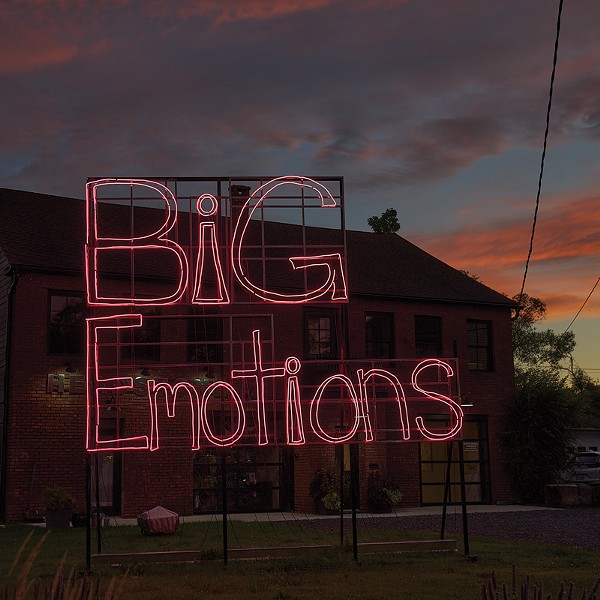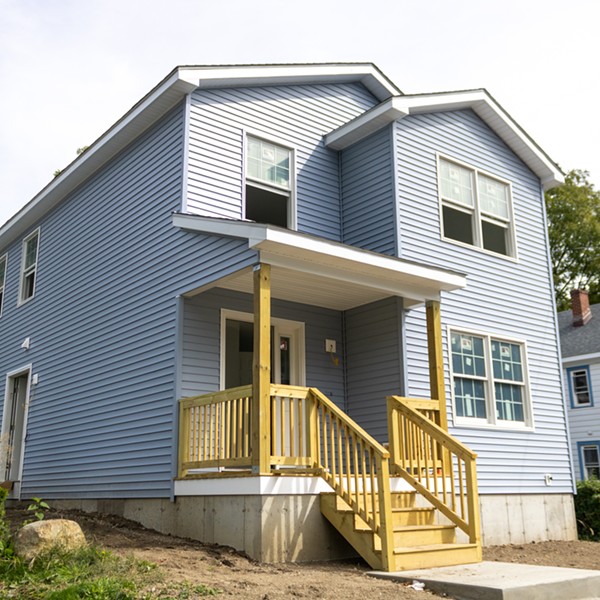Historically, Woodstock’s brand is “artsy, little town tucked away in the forested Catskills and frozen in time.” A place where the traffic is as light as the mountain breeze (unless it’s leaf-peeping season), the village green is quiet (unless the happy hippie drum circle is holding court), and only a handful of random, happy souls traverse Tinker Street to walk their dogs, sniff the incense, or simply enjoy the sunshine and the surrounding vistas.
Well, welcome to 2021: an age in which many here will tell you that such vignettes were already becoming endangered when the pandemic panic came along and sent things into hyperdrive.
“It started getting crazy about three years ago, with a lot more foot and car traffic,” says Fran Azouz, who moved to town over 40 years ago to be with her late husband, writer and seven-term Woodstock Town Supervisor Jeremy Wilber. (The couple met while Wilber was a bartender at the Bear Cafe and had their first kiss at one of Joyous Lake’s popular disco nights). “It used to only be like this in the summer. But now it’s this way all year ’round. Even on, say, a Wednesday in February, just finding a parking space is difficult. Last summer, the town had to close the swimming holes [popular Big Deep and Little Deep on Route 212] because they were getting too crowded and full of garbage from hordes of people coming in from out of town. I don’t think my friends and I had ever used the word ‘hordes’ to describe the amount of people visiting before. I still love Woodstock, I still have friends here and want people to come here and enjoy the town. But that’s what it was like.”
Art and Arrival
Hordes, influx, whatever the term, ex-urbanites have been flocking to the quaint Ulster County village in exponential numbers. But this town has been here before. Woodstock has seen several waves of settlement in its long history. Originally inhabited by the people of the Esopus tribes, around 1770 it saw the arrival of Dutch farmers who’d been edged out of Kingston by the English. Officially established as a town in 1787, Woodstock’s agricultural economy was soon complemented by logging, glass production, gristmills, tanneries, and quarries. It was toward the end of the 19th century when Woodstock’s widely recognized relationship with the arts originated. The town began by privately hosting several painters connected with the Hudson River School movement, and soon boarding houses opened to cater to groups of summering New Yorkers that included actors and circus performers who loved being able to hone their craft in the natural quietude.The Byrdcliffe and Maverick art colonies and the Art Students League of New York’s summer painting school were founded in the early 20th century, further luring many artists to the area permanently. In 1915, the Maverick colony began holding its summer chamber concert festival. Still going today, it’s the oldest chamber music festival in America, which, along with the live entertainment offered at the region’s Borscht Belt resorts and the mid-1960s Sound-Out music festivals in Saugerties, laid the launch pad for the 1969 Woodstock Festival.
Although the original Woodstock Festival was famously moved 46 miles south to its site in Bethel after the wary Woodstock Town Board denied organizers a permit, the town’s namesake connection to the event and its reputation as the home of figures like Bob Dylan, Lee Marvin, The Band, and Jimi Hendrix has nevertheless continued to attract the arrivals of space-seeking artists and non-artists ever since. (June saw the death of two creatives who’d long been Woodstockers: folksinger and lesbian activist Alix Dobkin and actor Allen Midgette.) And throughout each epoch there have been entrenched locals voicing their concerns about the periodic rising of the human tide.

“When I was researching on behalf of my mentor Alf Evers, I came across an article that ran in the Kingston Daily Freeman in 1915,” recalls author, poet, and musician Ed Sanders, a long-time resident whose biography of the late Woodstock town historian, Alf Evers, Life of An American Genius, was recently published by Meads Mountain Press. “It was covering how people in Woodstock were complaining about how the number of tourists and weekenders up from New York was getting out of hand, thanks to the attractiveness of the area and the arts community combined with the advent of the automobile. More recently, you had all of these people fleeing New York after 9/11 and then, 19 years later, this exodus because of the pandemic. So historically [the issue of sizeable influxes] is nothing new.”
Let Us Pause
What adds a different layer for Woodstock this time, it seems, is the acute shortage of affordable housing. In a saga similar to the one that has played out in Hudson and threatens Kingston and other small, tourism-reliant towns, a dramatic proliferation of short-term rental units driven largely by Airbnb has outpaced the growth of the working population. Some of the Airbnb operators are income-augmenting year-rounders who rent out a room or outbuilding, but many are non-residents who purchase local properties for the express purpose of renting them to short-term guests. In tiny Woodstock (67.83 square miles, much of them protected woods), there are only so many livable spaces to begin with, putting existing rentals at a premium during the biggest real estate boom in decades. While Airbnb guests do fuel the town’s economy by spending money in its restaurants and shops, the people who actually work the often low-paying jobs in those same restaurants and shops and want to live in town are saddled with crushing rents—if they’re able to find housing at all.“Just within my three-block area, which includes very short streets like Sled Hill Road and Pine Grove and Demming streets, I count between seven and nine Airbnbs,” says Azouz. “Sometimes I feel like I don’t have any real neighbors anymore. I’m seeing less and less familiar faces these days. In the village, there is also the Millstream Inn, [boutique hotel] Woodstock Way Hotel, the old Twin Gables B&B, all of which attract lots of visitors, hence the increased traffic, both vehicular and pedestrian. But I’m glad that the town is focusing now on pulling back the reins with short-term rental permits.”
“When I was a kid, if you couldn’t quite pay your taxes, you had a pot patch and sold it to friends of friends and that got you over the hump,” says Woodstock musician Tad Wise, who, at a June Woodstock Town Board meeting on the matter suggested that “since the government [is] growing these days, I [understand] that Airbnb-ing your place for a couple of months a year more or less fulfilled the same function. I suggested that a staggered Airbnb [permitting] schedule could prevent entire neighborhoods from being decimated.”
In May, the board lowered the previous town-wide cap of 340 short-term rentals to 285, and last month it voted to impose a nine-month moratorium on the processing and approval of demolition permits for residential structures and applications for transient accommodation uses, short-term rentals, and residential conversions in the town.
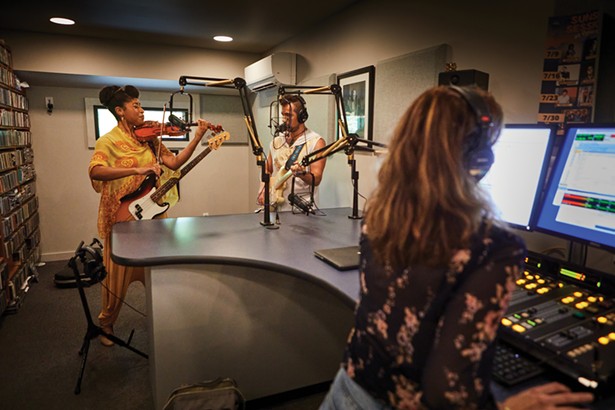
“We don’t want to demonize development,” says Town Supervisor Bill McKenna. “The moratorium only puts a pause on things; it gives us time to come up with solutions and create regulations that will guide us in what’s appropriate moving forward. Development isn’t inherently a bad thing. But the housing crisis is creating a less-diverse population, and we want to be conscious of that and address it.”
A proposed plan by Woodstock Way owners and developers Jesse Halliburton and Ryan Giuliani to convert the former Lasher Funeral Home in the heart of the village into a 20-unit hotel and retail space with four newly constructed 1,200- to 1,400-square-foot guest buildings was dropped by the pair in April, in light of the pending moratorium and vocal pushback from residents who feared it would change the town’s character.
This Way to Your Table
But even as Woodstock grapples with the tumultuous housing realities that are besetting municipalities across the nation, the retail and restaurant scene that has made the town a destination for so long is bounding back in these post-quarantine times. Staple shops like the Golden Notebook bookstore are fully reopened to customers. Established in 1978, the store is now hosting its author readings and other events at Nancy’s of Woodstock Artisanal Creamery at the compound of the historic nearby Bearsville Theater.Among the newer culinary spots in town is Pearl Moon, which specializes in cocktails and reinterpreted American diner classics using many fresh, locally sourced ingredients. “We were among those people who moved here during the pandemic,” says co-owner Meghan Haas, who with her husband, chef Michael Brooks, launched the bistro on the site of the former Wok ’n’ Roll restaurant on Mill Hill Road.
“We moved up from Brooklyn and we were lucky to find an apartment—I think the only reason we got one was because we could show we had jobs. My aunt and uncle live here, and we’d already been coming for years to visit them when they heard that [former Wok ’n’ Roll owner] Sha Wu wanted to sell the restaurant. They told us they’d be interested in buying it and making it a new restaurant if Michael and I would run it, so that’s how it happened. We opened in January, during the pandemic, which was hard, but it’s been a pretty positive experience overall. We have a great staff and we’re paying New York City wages: $15 an hour. It’s a wonderful community and business has been getting busier and busier since the COVID restrictions have loosened up. We also have live music, and we meet up with the owners of [local venues] Colony and the Station to try to work it so the shows we do here don’t compete with what they do.”
At the intersection of Mill Hill Road and Levon Helm Memorial Boulevard and adjacent to the Woodstock Golf Club is the Millstream Tavern, which during the 1960s was a hangout for locals like The Band and Van Morrison. “We took over the space last December and did some massive renovations before reopening in April,” says co-owner Dallas Gilpin, whose Shale Hill Hospitality Group also operates Saugerties’s Dutch Ale House, Windmill Wine and Spirits, and the Kitchen at Shale Hill Farm catering.
With a kitchen led by Michelin-starred chef Ryan Tate, the restaurant offers locally brewed beers, craft cocktails, and small-batch wines alongside what Gilpin describes as “a 1985 golf course menu with a twist. We make our own pasta, and all our food is always fresh. Our bar and dinner menus feature fresh seafood and oysters.” The Gilpins, who come from a Wall Street finance background and are partnered in their hospitality work with fellow Saugertisian Jenny Oz LeRoy (the daughter of Tavern on the Green and Russian Tea Room owners Kay and Warner LeRoy), are bullish on the inflow of new residents to Woodstock. “I see it as really positive, this influx of industry and talent and skills,” says Gilpin, whose Shale Hill Hospitality Group employs over 70 people. “You know, ‘a rising tide lifts all boats.’”
Music in the Air
The music and performance scene that’s so emblematic of Woodstock is also re-emerging in the wake of COVID closures. The Bearsville Theater, which hosted livestream lockdown events, has once again begun presenting concerts and other live programming that includes a Steely Dan tribute (August 12), the great NRBQ (August 27) and more.The Woodstock Playhouse, which reopened in June with a production of “Fame” that saw the theater consistently sell out at its COVID-adjusted capacity of one-third of its standard admittance rate (current guidelines include masks for anyone not fully vaccinated). “The audiences are really responsive and there’s been a huge increase in support—people have been really wanting live theater,” says company manager Douglas Farrell, whose optimistic view of the town’s growth is informed by the facility’s history. “This place was founded in 1938 as a sort of rural extension of Broadway; you had people like Chevy Chase, Diane Keaton, and Judd Hirsch performing here. There’ve always been influxes, and that really helps our summer youth program and the other things we do.” Through August 15, the theater is staging “Sweet Charity”; on August 27 and 28, tribute group The The Band Band will celebrate the 50th anniversary of The Band’s 1970 album Stage Fright, which was recorded at the playhouse.
Nightclub and restaurant Colony has been hosting bands outdoors on the stage of its newly developed beer garden, which features an expanded back-of-house food-order counter/bar and table seating. Live music is something that so many locals—and visiting out-of-towners—are thankful to see returning as well, says owner Neil Howard, who took over the 1929 venue in 2015. “They’re loving it,” he enthuses. “People who’ve lived in Woodstock since the ’60s and ’70s have been coming up to me at our shows and saying, ‘This is the closest to what [the music scene] was like 50 years ago!’ It definitely makes us feel even better about being open again.”
Staying on Track
“I started hearing about Woodstock in the 1960s, when I still lived in New York,” says Sanders, who recently collaborated with illustrator Rick Veitch on the graphic history Broken Glory: The Final Years of Robert F. Kennedy (Arcade Publishing), and in the past has helped the town write its zoning and short-term rental laws. “Dylan was up here, of course. I remember sitting in the Cafe Espresso on Tinker Street, which is now the Center for Photography at Woodstock, and sitting with my friend Phil Ochs in 1964 and listening to him write ‘I Ain’t Marching Anymore’ while we watched the Memorial Day parade on the TV. Right now, there aren’t any cheap places around to eat at, which I hope is a temporary situation. I don’t do many interviews anymore, but when I do meet someone here in town for lunch to talk, I prefer not to be stuck paying $15 for an omelette.”Budget dining choices aside, Sanders is confident about the community’s ability to stay the course as it works through the growth challenges it currently faces. “One thing the town might do well to consider having is workforce housing, so local employees could be guaranteed a place to live while they work here,” he says. “But, yes, I do think it’s doable for the town to figure this stuff out. There’s a really rigorous cadre of older people here who were impacted by the Vietnam War and Reagan and the Civil Rights era. And younger people are becoming more aware of things, thanks to the internet making it much easier to research. There are strong people in this town who want to keep it affordable, people who want Woodstock to remain Woodstock.”








